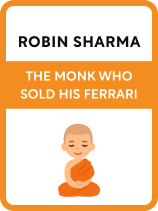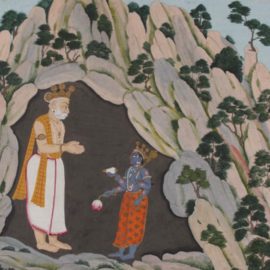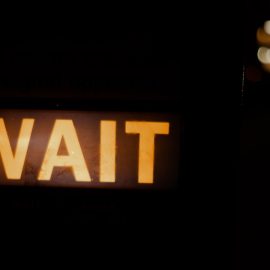

This article is an excerpt from the Shortform book guide to "The Monk Who Sold His Ferrari" by Robin Sharma. Shortform has the world's best summaries and analyses of books you should be reading.
Like this article? Sign up for a free trial here .
Who is Yogi Raman in The Monk Who Sold His Ferrari? How does Yogi Raman teach Julian Mantle how to change his life?
The Monk Who Sold His Ferrari is a parable, a story meant to teach a lesson. Through Yogi Raman and Julian Mantle, the readers learn methods to control their thoughts, to bring order and balance to their lives, as well as why it’s so important to do so.
Read more about Yogi Raman and the lessons he shares in The Monk Who Sold His Ferrari.
Julian and Yogi Raman
The book actually contains several parables layered on top of each other: Julian, a lawyer-turned-monk, speaks with a former colleague named John about his travels in India and how he learned to master himself and take back control of his life. He has a lot to teach, and John is willing to learn.
Within the Julian-John story is another layer about Julian’s time in India, where he studied with the Sages of Sivana and learned the secrets of enlightenment. Within that story is a fable Julian learned from his primary teacher, Yogi Raman. Raman’s story contains metaphors for the seven main lessons Julian learned from the Sages, and which John (and, hopefully, the reader) will now learn from Julian. The lessons start in Sivana.
Sivana: “Oasis of Enlightenment”
The monk introduced himself as Yogi Raman and brought Julian to Sivana, a small village hidden in the mountains.
Sivana was an incredible place. The buildings were simple huts, but they seemed to be made entirely of roses tied together with twigs and string. The inhabitants all showed the same ageless health and vigor as Raman. None of them spoke, each just offered Julian a simple bow and went about their business purposefully—but calmly, not like Julian’s old hectic lifestyle. The most remarkable thing of all was that everyone there seemed to be perfectly happy.
Julian was welcomed with a feast of fruits and vegetables. He later learned that this diet of fruits and vegetables is one of the keys to the Sages’ health and happiness. After the meal, he was taken to what would be his hut. Julian felt hope for the first time in years. He knew, deep down, that Sivana was where he would begin to heal, and that his best days were still ahead of him.
The next day Julian began studying under Yogi Raman. Through study, meditation, and quiet observation of the world, Julian learned many of the Sages’ secrets. He learned to master his own thoughts, to take responsibility for his own health—physical, emotional, and spiritual—and how to avoid slipping back into his unbalanced lifestyle of overwork and unhealthy choices.
After only three weeks, Julian noticed the first signs of personal growth: He began noticing the simple beauty in small things like the night sky and a spider’s web. At around the same time, he began experiencing an inner peace he’d never felt before. Julian became happier, more energetic, and physically healthier with every day he spent with the Sages.
Julian came to realize that the entire world, but most importantly one’s own inner world, is very special. Outward success means nothing without inner health and balance. He came to believe that you can’t love others without first loving yourself, and can’t help others without first helping yourself.
Sharing the Lessons of Yogi Raman
John asks Julian whether the teachings of Yogi Raman could help him, too. He is eager to learn more from Julian, and he hopes to regain his own vigor and passion for life.
Julian says that the monk’s teachings can help anyone, and he promises to come to John’s house the following evening to start teaching him. For now, however, he has to go and let John get home to his family.
John is left with a profound sense of how much is out there that he has not even begun to understand.
The Next Evening
Julian comes to John’s house the next evening as promised, and they continue talking. However, John begins to wonder whether it’s all a prank. He says the whole story is unbelievable.
In response, Julian picks up a teapot and pours it into John’s cup until it is full, then keeps pouring as it overflows. Julian says that, like the cup, John can’t take in any more until he empties himself. (Shortform note: The Empty Cup is a common metaphor about letting go of what you think you know so that you can learn new things.)
John realizes that his “cup” is indeed full of old ideas and habits. For example, his wife Jenny often tells him that she wishes he would be more adventurous and try new things, but he doesn’t. His cup has no room for them.
Julian challenges John to study with him and apply his teachings just for one month. He promises that John will see huge improvements in his own life, and the lives of those around him. However, there is a condition: Just like Yogi Raman made Julian promise, John has to take what he learns and spread it to as many people as he can. John agrees to the terms without hesitation.

———End of Preview———
Like what you just read? Read the rest of the world's best book summary and analysis of Robin Sharma's "The Monk Who Sold His Ferrari" at Shortform .
Here's what you'll find in our full The Monk Who Sold His Ferrari summary :
- Why your career success might actually be killing you
- How to live a simple and fulfilling life
- The 10 rituals you should practice for health and healing






